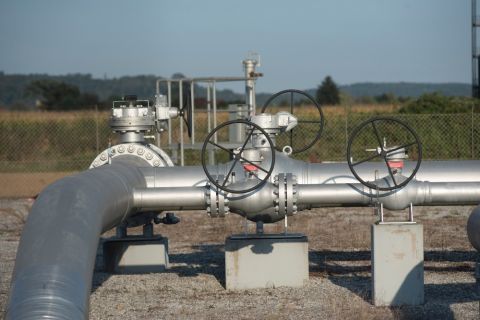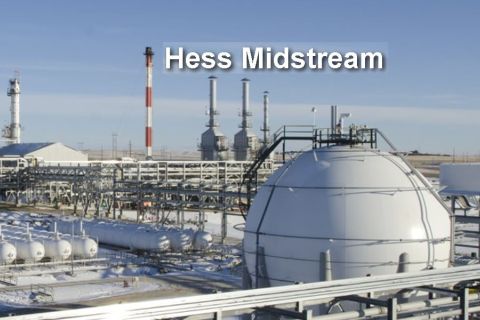With some estimates showing as many as 20 bbl of water required for every barrel of unconventional oil produced, managing the tremendous volumes of water required of multiwell shale plays is inarguably one of the most daunting issues confronting onshore operators today. Consequently, the incessant public and regulatory scrutiny, limited disposal options, and continually rising compliance costs have inspired, with varying degrees of success, the development and application of water treatment technologies as diverse as electrocoagulation (EC) and ultraviolet (UV) disinfection to help operators reduce both consumption and costs.
More recently, a uniquely engineered and ultra-mobile version of membrane separation technology has emerged as a cost-effective option for treating and recycling more than 80% of all the water used in a typical shale oil or gas project. The dual-tower AQUA-VES mobile water treatment system employs cross-flow vibration separation to process for reuse up to 2,500 bbl per tower of frac flow-back, slop, and produced waters as well as the spent water from drilling, drilling completion fluids, and rig wash.
Unlike more conventional systems that remove some but not all wastewater contaminants, the new trailer-mounted water management technology has been field-proven to extricate nearly the full spectrum of impurities, including total suspended solids (TSS), bacteria, oxidized metals, oil, grease, other total petroleum hydrocarbons (TPH), and a percentage of total dissolved solids (TDS) entrained within the slurry.
The onsite treatment system, which employs vibration membrane filtration technology, has been applied effectively in the Permian basin, Marcellus, Eagle Ford, and other shale plays. The cornerstone of an all-inclusive water life-cycle management service, the system is the only one of its kind capable of employing both micro/ultra-filtration or a nano-filtration to remove substances as minuscule as 0.0005 microns (µ). The removal of the smallest solids clears the way for continual reuse of what otherwise would be wastewater, which in some plays can cost upward of US $18/bbl for transportation and disposal.
New twist on membrane separation
Membrane filtration has been used for years as a water purification methodology largely because of its capacity to allow controlled separation through selection of pore size and its superior separation proficiency. The conventional membrane-oriented water treatment systems used in shale E&P mostly employ cross-flow filtration that requires excessively high flow rates to keep the filters clean. Not only does this approach require appreciably more energy to function, it also filters a comparatively small percentage of the total flow.
In traditional cross-flow filtration, most of the shear that the turbulent flow generates is away from the boundary layer, thereby preventing the efficient removal of retained particles. Consequently, the membranes tend to plug and foul, reducing the flux appreciably. Vibratory-induced cross flow, on the other hand, focuses shear waves at the membrane surface, repelling solids and other contaminants within the boundary layer. This methodology allows for higher concentrations while maintaining long-term sustained rates up to 10 times higher than systems employing standard filtration.
The vibratory separation approach was designed into the latest generation water treatment technology. The new system uses 0.05-µ Teflon-coated membranes that vibrate continuously, meaning fluid velocity at the wall is dictated by vibration rather than flow. Accordingly, the shear waves propagating from the membrane surface hold suspended particles above the surface, thus allowing free transport of more liquid through the membrane. As a result, the membrane remains clean, and with throughput rates up to 15 times higher than conventional filtration technologies, the new system allows for unrestricted filtration of a comparatively larger proportion of the flow-through. Due to high flux and minimal to nonexistent membrane scale and fouling, the system also is extremely energy-efficient, requiring only 0.27 kilowatt-hours per thousand gallons of filtrate.
Furthermore, the vibratory membrane separation system employs surface rather than depth filtration. When membrane cleaning is required, it can be accomplished on the surface without the nonproductive downtime associated with disassembling and cleaning a soiled depth filtration unit. Since the durable Teflon membrane coating is tolerant to nearly all cleaning compounds, including acids and solvents, it poses no restrictions on the cleaner used to remove any fouling that may have occurred.
How it works
The system arrives at location on a 16-m (53-ft) trailer holding a pump skid and the two membrane towers. Contained within the small 1.3-m by 1.3-m (4-ft by 4-ft) footprint of each module are stainless steel trays holding approximately 400 constantly vibrating micro/ultra-filtration membranes, delivering cross flow with a total surface area of 112 sq m (1,200 sq ft). Before initiation of the treatment operation, site-specific wastewater samples are analyzed to determine the level of filtration and treatment that will be required. Depending on the operating environment, the system is designed to accommodate a wide range of membrane sizes, from microfiltration to reverse osmosis.
During operation the slurry enters the top of the vibrating module, where alternating blockages in the downward flow path force the contaminated water into the cross flow. As the slurry continues to flow across the vibrating membranes and traverse the module, the vibration generates centrifugal forces that throw the heavier materials into an open trough that extends alongside the membrane trays to the height of the module. The separated material drops to the bottom of the trough where it exits through a pipe as the reject. The clean filtrate, meanwhile, is forced upward where it is pumped into frac tanks and fully treated for reuse.
Since only substances 0.05 µ or smaller are able to flow through the membrane trays, the vibratory membrane separation system effectively pulls out all oxidized metals, bacteria, and suspended solids as well as some TDS and all petroleum hydrocarbons.
Field comparisons
Direct field comparisons with competing processes including EC, UV, and evaporation show considerable advantages, with the vibratory membrane separation system holding a sizeable upper hand both in terms of the volume and diversity of contaminants removed.
Illustrating its capacity to remove the smallest entrapped solids, the system has shown consistent delivery of comparatively cleaner permeate with average nephelometric turbidity unit levels below five and a near 100% reduction in both bacteria levels and insoluble organics such as oil and grease. Consequently, more than 80% of the total slurry treated is recovered and returned to the active water stream for reuse in subsequent wells.
In addition, compared to competing water management systems, the new technology is the only such system engineered to remove nearly all types of contaminants. Some processes, for instance, remove only suspended solids, while others are designed solely on dislodging biocontaminants and TDS. Furthermore, the vibratory membrane technology gets rid of TSS, bacteria, and TPH and oxidizes metals and some TDS at a cost as low as $1.50/bbl, depending on the volume treated.
Recommended Reading
Tallgrass Energy, Bridger Starts Open Season for Pony Express Pipeline
2024-01-25 - Tallgrass Energy and Bridger Pipeline are looking for customers for the Northwest portion of the Pony Express line in Wyoming and Colorado.
Hess Midstream Announces 10 Million Share Secondary Offering
2024-02-07 - Global Infrastructure Partners, a Hess Midstream affiliate, will act as the selling shareholder and Hess Midstream will not receive proceeds from the public offering of shares.
EQT CEO: Biden's LNG Pause Mirrors Midstream ‘Playbook’ of Delay, Doubt
2024-02-06 - At a Congressional hearing, EQT CEO Toby Rice blasted the Biden administration and said the same tactics used to stifle pipeline construction—by introducing delays and uncertainty—appear to be behind President Joe Biden’s pause on LNG terminal permitting.
Venture Global Acquires Nine LNG-powered Vessels
2024-03-18 - Venture Global plans to deliver the vessels, which are currently under construction in South Korea, starting later this year.
Imperial Oil Shuts Down Fuel Pipeline in Central Canada
2024-03-18 - Supplies on the Winnipeg regional line will be rerouted for three months.





